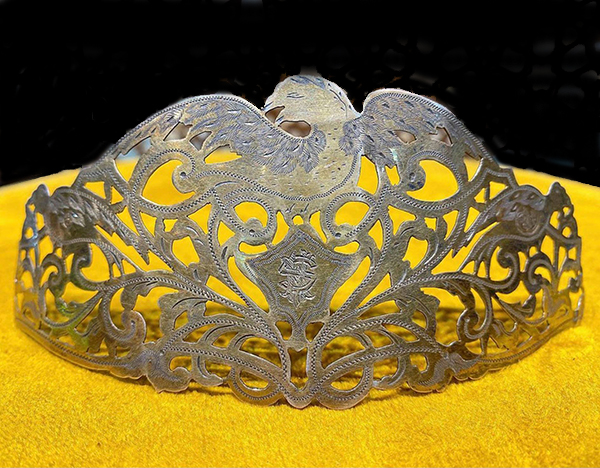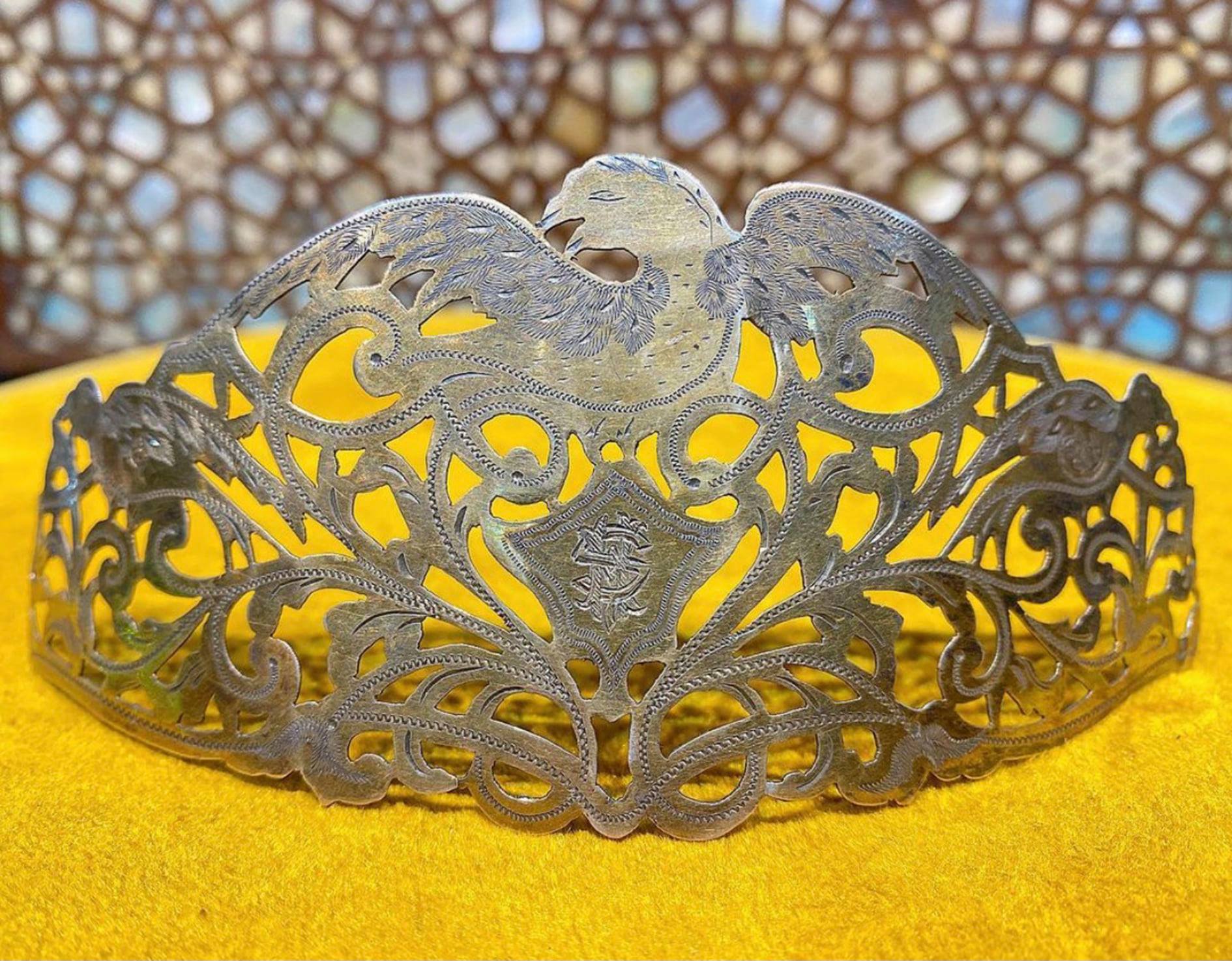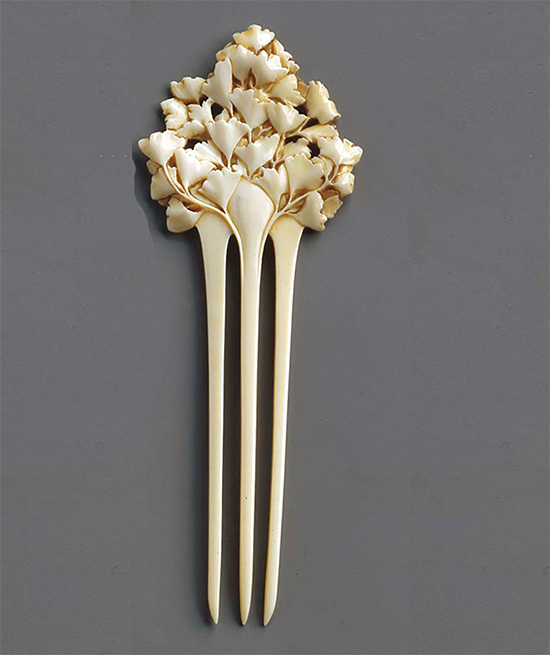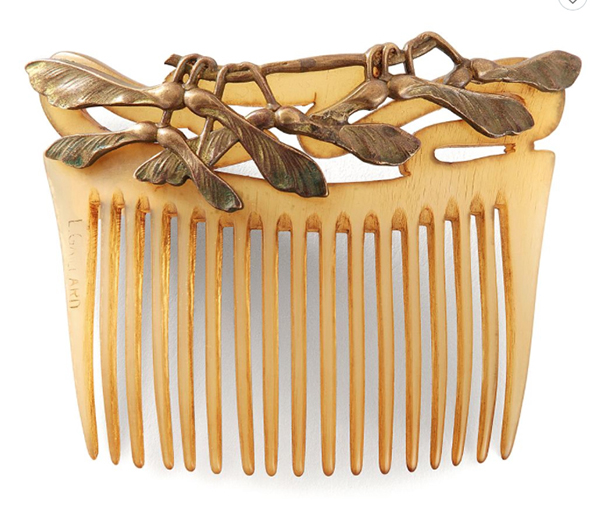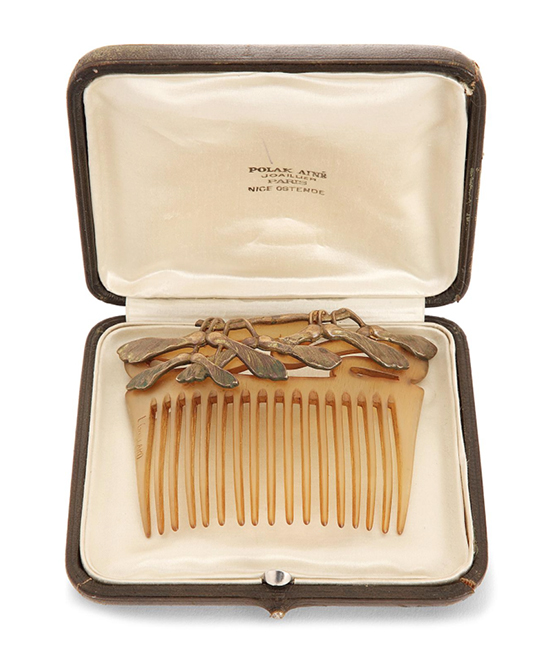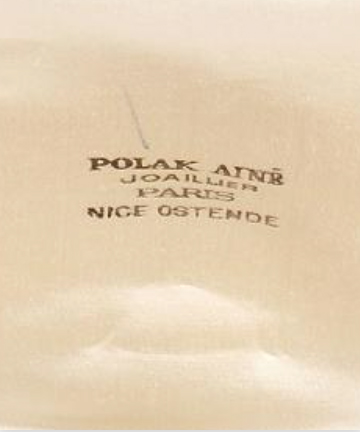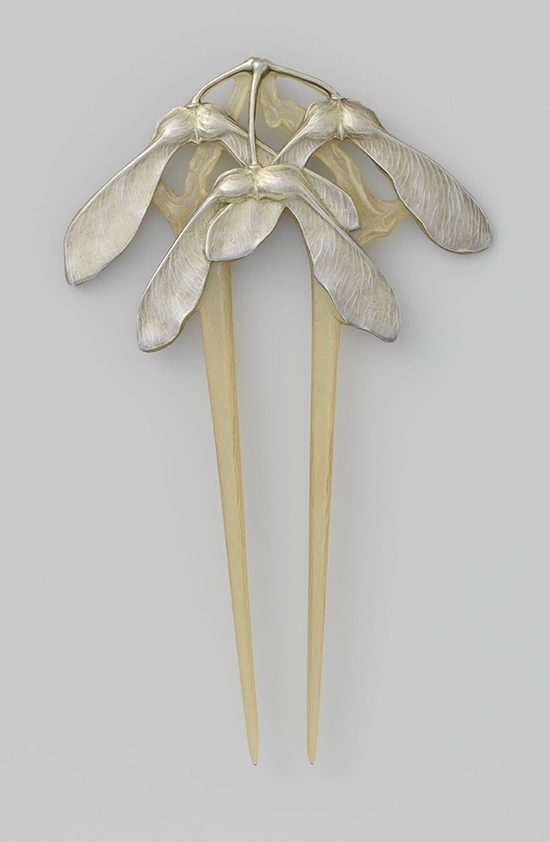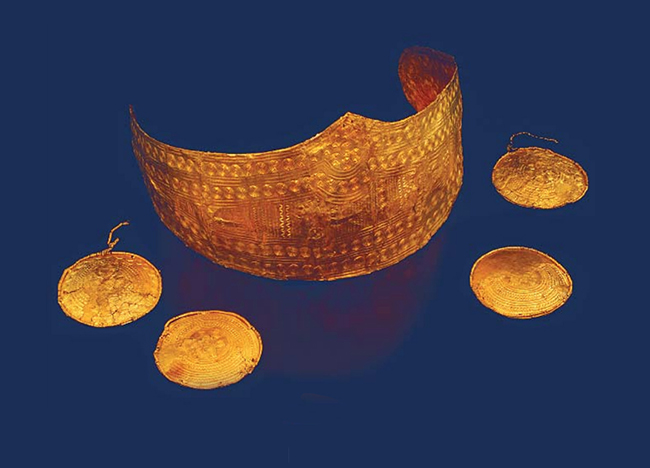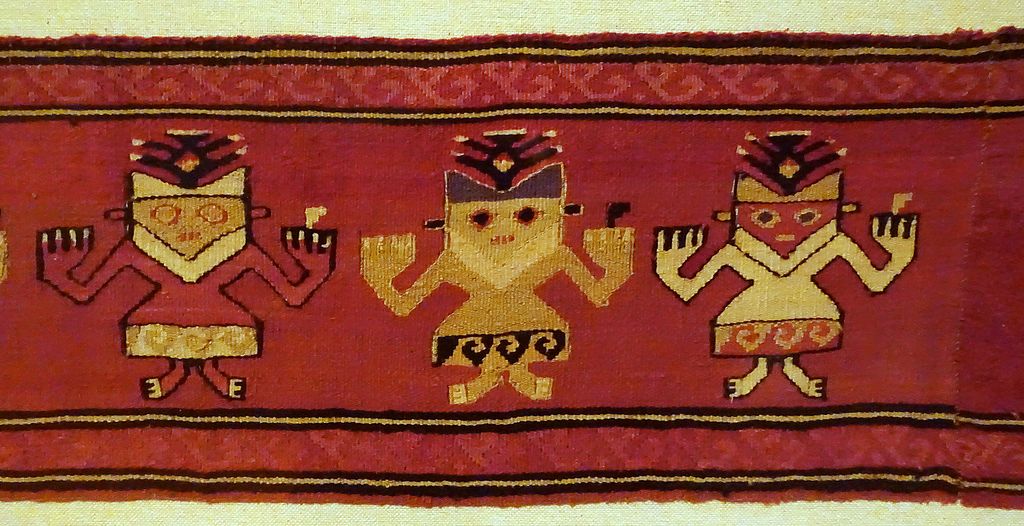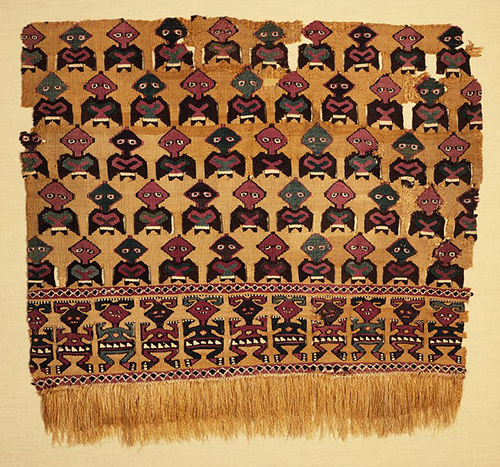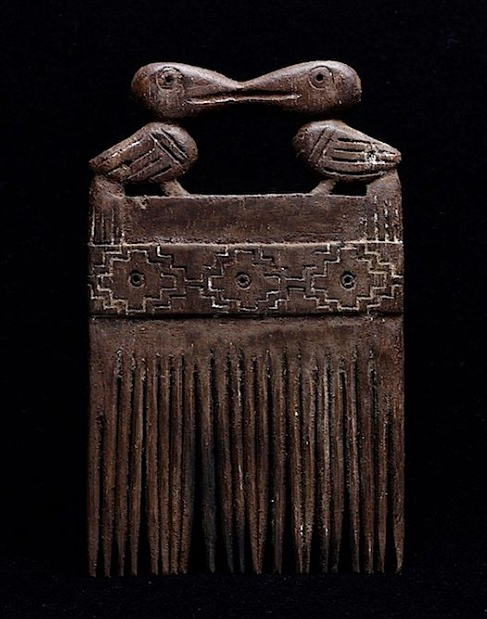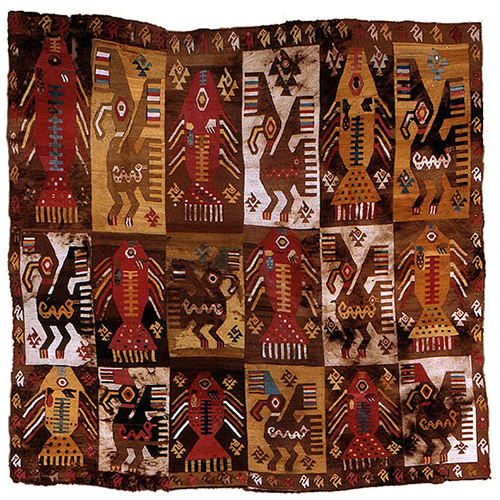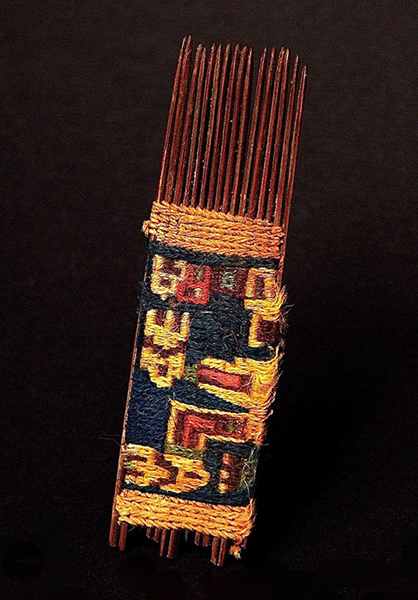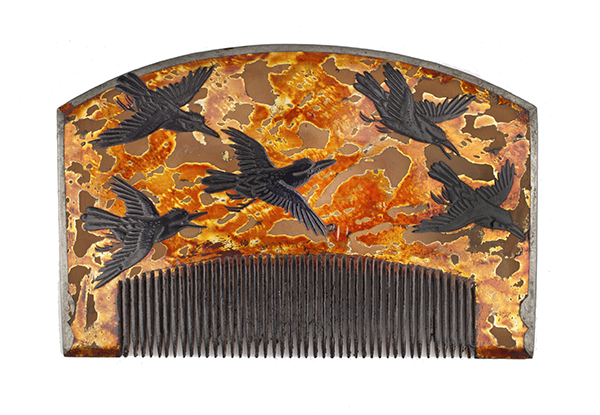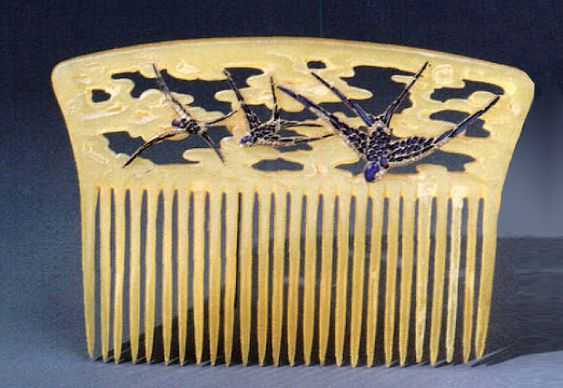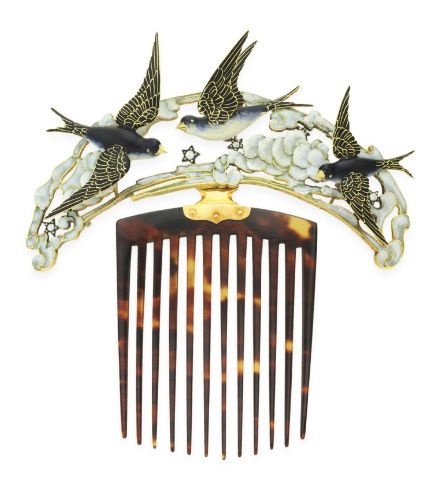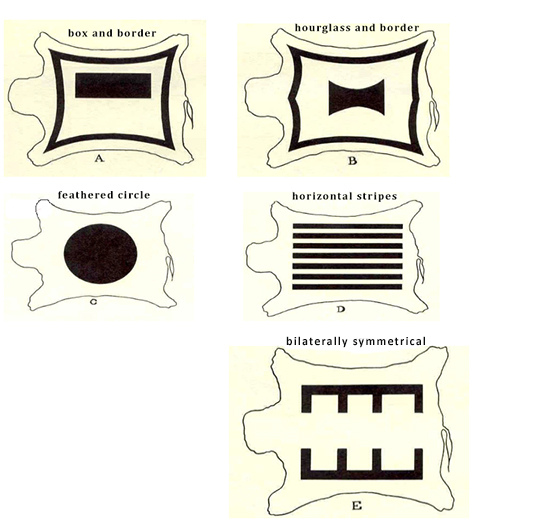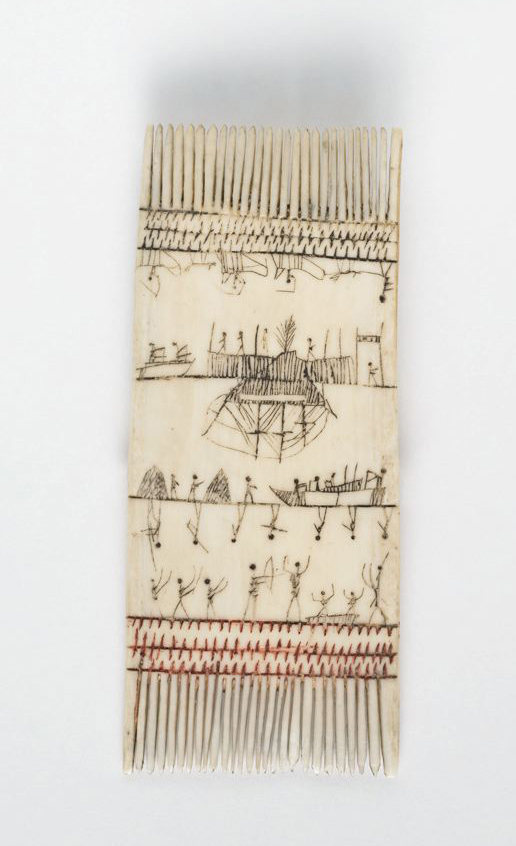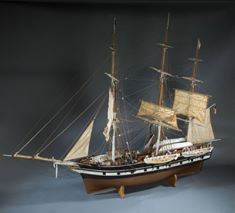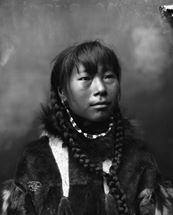Clarity and obsession blur after midnight. Caffeinated collectors scour listings, unaware of the time. Is this piece real or fake? Let me examine the details. Oh no, did a major auction house get fooled by that guy again — the one who has a second-floor room two streets past obscurity? They did! Unbelievable.
This scenario repeats itself around the world.
Alaa Eddine Sagid of Ethnic Sparks is an expert in Moroccan jewelry. Although I have no idea what he does at 3:00 am, I have learned much from our conversations. As we spoke over years, a pattern emerged in what he was saying. There are too many necklaces that claim to be 18th Century on the market.
Only 5 authentic Moroccan 18th Century necklaces have been found. One, from the Musée du Quai Branly, has an 18th Century necklace attached to a 19th Century pendant.
The pendant jewelry

The beads of the necklace
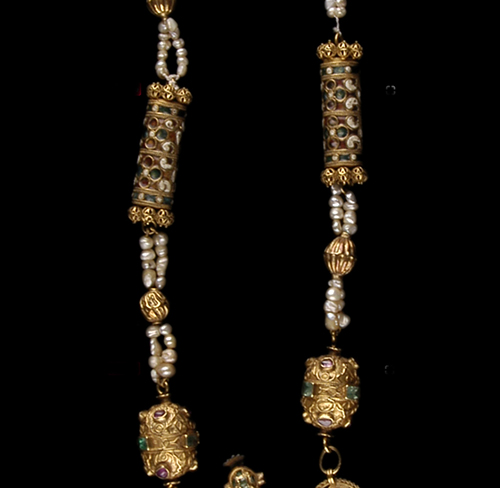
In the full necklace, the loop finding between the necklace and the pendant tells you that the pendant was put on later. Notice that the pearl loops on top of the necklace would have been tied together.

The Victoria and Albert Museum’s example is completely 18th Century. Notice how the left side of the pendant has a loop soldered on and a tie between the pearl necklace and the pendant. On the right, the loop might have broken off, so the necklace is tied to an opening in the pendant’s filigree. Look at the delicacy of the claws. These were hand made, and the jewel in the center of the feet was also set by hand. Double-headed eagles, even with crowns between the heads, were popular in the 18th Century.

The full necklace at the Museum of Jewelry. Again, on top, it is tied by a string.

Christie’s sold this necklace for GBP 34,850 on 7 April 2011. However they covered their rear ends by saying it was “Probably Tangier, 18th Century.” It’s a fake.
This pendant tries to mimic the one in the Musée du Quai Branly. The museum even readily admits that the pendant is from the 19th Century. On the Christie’s necklace, notice the tail. It is much larger than the real necklaces, whose tails are the same length as the round body of the eagle. The size of the tail throws off the proportions of the bird. Also, notice how there are pearl pendants on the bottom, which look perfect. Now look back at the original. Those pearls were uneven, like the human condition.

Now, my favorite part. On top of the Christie’s necklace, there is a hook finding. Really?

This is the full necklace from Christie’s.
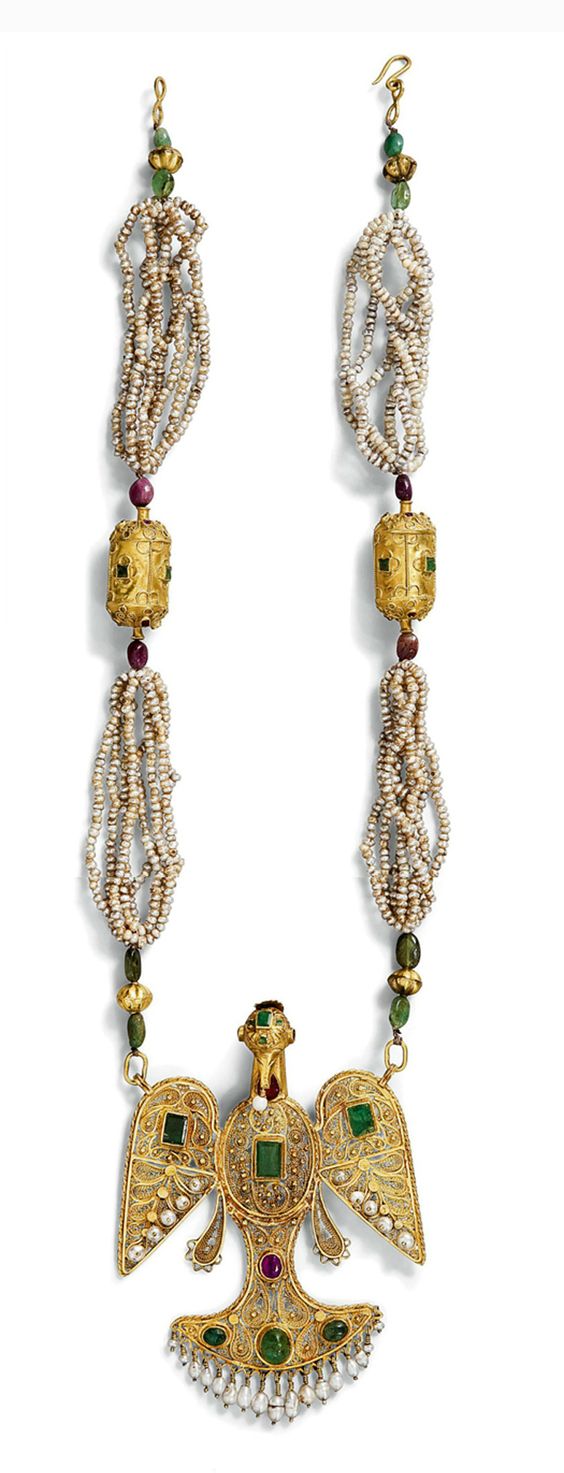
Alaa said, “That sale had a mixed lot of pieces, supposedly of same provenance and family heritage. Christie’s told a story, whose parts did not fit together. The one you show here is a definite fake, very likely a market copy. Many stylistic details belonged to at most the beginning of the 20th Century.
“Many pieces look like they come from the same workshop, which might be an origin of trafficked goods. The work is clumsy. The enamel is too vivid, and the overall work is not fine enough. The plot behind these necklaces may be more complex. Many people could be involved in a money laundering scheme.
“I have been thinking of writing a full article about these gold Moroccan copies, complete with references. However, I’m trying to find the smith I suspect to be behind these pieces. I missed him twice in the local antique market. He has great skills in a fishy trade.
“We falsely assume that people are interested in what is genuine or not. They just want to wear something beautiful, unique, and trendy. Remaining on the surface is easier than digging into a culture or absorbing the anguish of the true creator.
“These modern copies will never fetch the fantastic amounts they did at the beginning. As soon they began to downsell in Western auctions, the copies appeared en masse in the Moroccan market and began swarming Instagram. Now they are being offered in flea and antiques markets by high end, fishy dealers. The scam is at the last stage of its development.”

